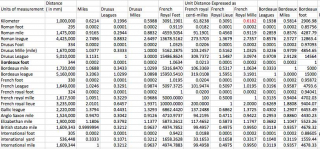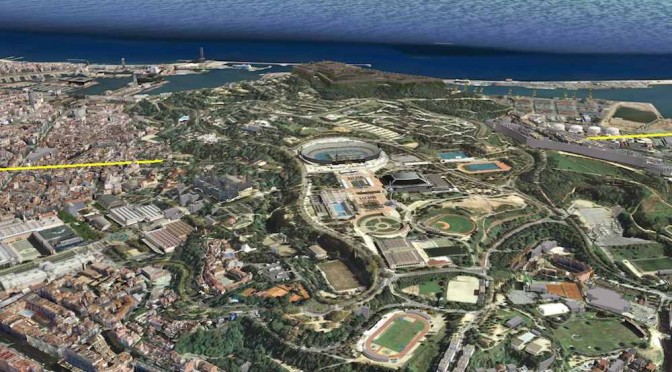The table given below is a way of trying to understand the relationships between a myriad of measurement systems. The reason I have used the kilometer as my common reference is that it is apparently the most rational system. At least when I drew up the table I believed it was unrelated and uncontaminated by the irrational decisions made in the development of the other systems.
The table given below is a way of trying to understand the relationships between a myriad of measurement systems. The reason I have used the kilometer as my common reference is that it is apparently the most rational system. At least when I drew up the table I believed it was unrelated and uncontaminated by the irrational decisions made in the development of the other systems.
Originally the metre was intended to be one ten-millionth of the distance from the Earth’s equator to the North Pole (at sea level), its definition has been periodically refined to reflect growing knowledge of metrology. In fact this was derived from measurements made between a belltower in Dunkerque and the fort on top of Montjuich( Mountain of the Jews) in Barcelona. However since 1983, it has been defined as “the length of the path travelled by light in vacuum during a time interval of 1/299,792,458 of a second.”
I still think it is a good base for making comparisons, but I no longer believe it is independent. Another system of measurement is the “Royal French Foot/mille/lieue” Although the table is included in its entirety ( and it could be extended considerably to include many more units of measurement, the figure outlined in yellow on the first line is the most significant entry in this table. The French Royal Units of distance were introduced by Charlemagne and were still in common use in the period immediately before the French Revolution which ushered in the metric system.
The figure outlined in yellow shows that the French Royal Mille is related to the metric system by the relationship 0.618, the golden number. This means that the Royal Mille was also based on a relationship to the diameter of the earth, or, god forbid, the time taken for light to pass through a vacuum!
The following page deals with the implications of this discovery. Discovery? I can hardly believe that no one else knows this!
Table

